Hiii Thank you for helping me so much! Later! (I didn't want to type too much I'm dead tired..)
Why the Deeper You Go, the More Giants You See
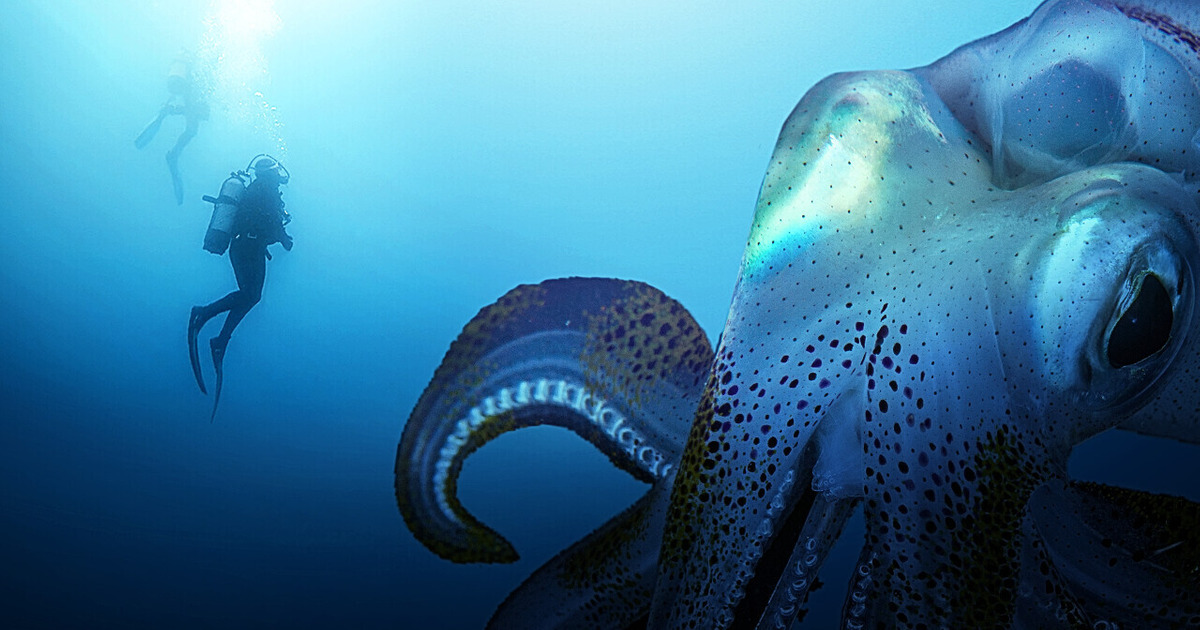
If you could dive right into the mysterious darkness of the ocean depths, who knows what you’d come upon? Legends that are hundreds of years old mention some giant sea monsters hiding deep down below the ocean waves, like the Kraken, the Loch Ness monster, The Hydra, Leviathan, and so many more.
Okay, no one has ever seen such monsters, but there are still weird and unusually big sea spiders, squid, worms, and many other animals that grew way more than we’d expected. Take a look at the colossal squid from subantarctic waters. It’s around 14 times longer than the arrow squid that lives near New Zealand. And deep down in the Pacific Ocean, there’s a sea sponge as big as a minivan.
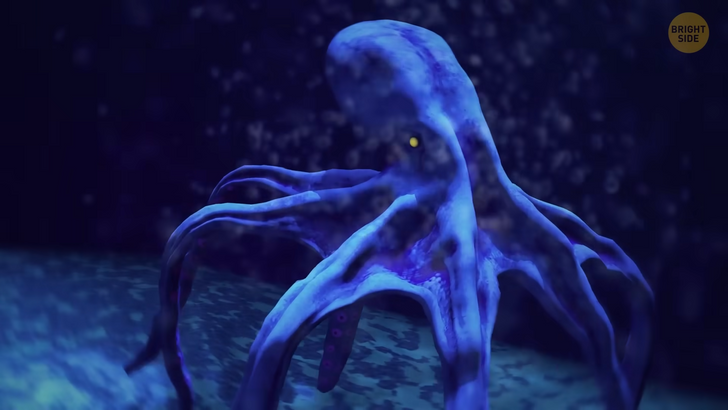
Oceans contain about 96.5% of all water on our planet. Up to 80% of all life on Earth we’ve discovered is under the oceanic waves. We haven’t explored, mapped, or even seen more than 80% of the ocean. In fact, we’ve mapped Mars better than we have the ocean bottom. The pressure down there is insane, and it would make you feel like you’re holding up almost 50 jumbo jets. And temperatures at such depths are extremely low.
Conditions deep below the oceanic surface are harsh. So creatures that live there need to adjust. That’s why many of them grew very, very big to survive. Creatures that live in cold dark depths are so big because of a phenomenon called deep sea gigantism. The deeper you go below the oceanic surface, the less sunlight there is. That’s why the temperatures drastically fall. The result of this is increased cell size and longer life of creatures.
Also, these creatures don’t have as much oxygen as the marine animals that live in shallower parts. And their food sources are minimal. Much of the food they get comes from shallower waters and only a little bit trickles down to the deeper parts. And when there’s not enough food, being large is an advantage.
Larger creatures can move farther and faster to find something to eat. Their metabolism works slower. They don’t digest the food that fast, so they can store food and conserve energy for hard times when they can’t find anything to eat. They don’t need to regulate their body temperature either, which also helps them save some energy — which they can then transfer to other body processes.
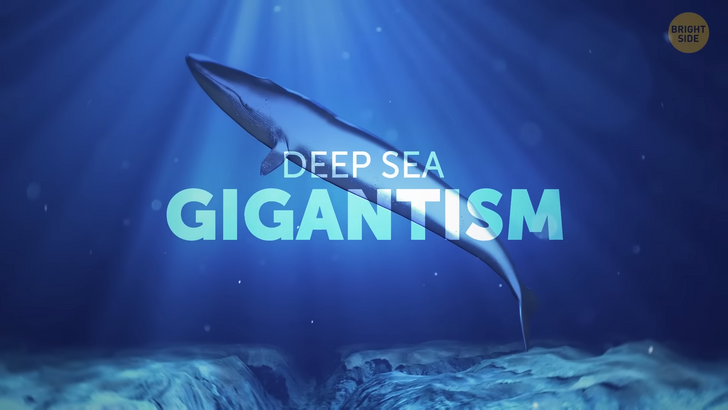
They mature more slowly and later than those living in shallow waters. The majority of fish species that dwell in deep waters live 30 years or even more. Orange roughy fish, on the other hand, live up to 150 years. This fella grows 24 feet in length and weighs up to 1.5 tons. But it grows to be so big for centuries.
They start looking for partners when they’re 150 years old. And they can also live this long because there are not so many predators at such depths. Also, there are no humans or other things that can disturb them or endanger their existence. At such depths, the environment is pretty stable, so many animals there are like living fossils, because they probably haven’t changed in millions of years.
The first 650 feet of the ocean’s depth are considered to be the open ocean. The majority of the marine life we’ve discovered lives there, since that’s the area the Sun can still reach. And then, as you continue going deeper, you reach the Twilight Zone. It seems like nothing lives there. But at about 820 feet you see a small oasis of ancient life blooming.
For example, there are sea-lilies, animals that have been living at such depths, unchanged for millions of years. Coelacanths, another living fossil, have been living in the ocean for more than 360 million years. Hagfish haven’t changed in a very long time either — for over 300 million years. This creature lives at depths of 5,500 feet. They evolved before the rest of the vertebrates, which is why this is the only living animal without jaws or a spine, even though it still has a skull.
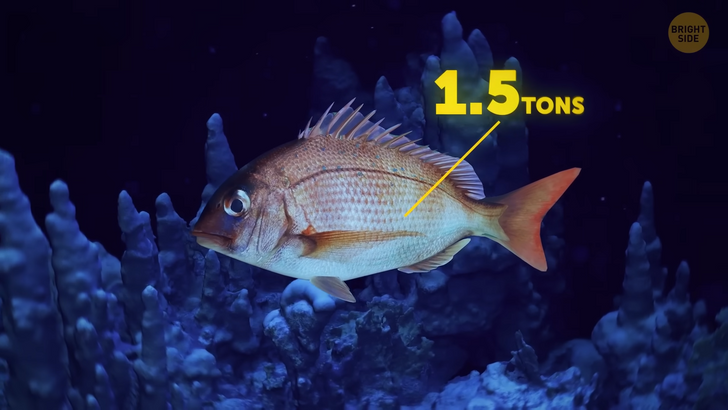
Deep-sea creatures can’t survive in shallow waters. They’ve evolved to live in depths under bigger hydrostatic pressure. Humans and other organisms that have internal spaces filled with gas would end up crushed if we could go to such depths. That’s why deep sea divers always need to wear special dive suits, designed for surroundings with higher pressure, even though they’re not going THAT deep, to the areas where these giants live.
But near Antarctica, you can see gigantism way closer to the surface. Like giant sponges, sea slugs, sea spiders the size of a dinner plate, worms, and even some enormous single-celled organisms — they all tend to chill in shallower waters [30 feet]. Scientists are not sure why exactly, but they think it could have something to do with oxygen. Giant species use just a little oxygen, and the waters around Antarctica are pretty rich in it, which means there’s hardly any limit to these animals growing bigger and bigger.
Back to deep-sea creatures. As mentioned, they had to adjust to strong pressure, so they almost don’t have any air gaps in their body at all. They’re mostly water-based and since water is in-compressible — which means it’s not something you can compress — it helps them stay unaffected at such high pressure. But, because of all that, if they were to go up towards the surface, they’d probably swell up, maybe even explode.
Just look at the blobfish, the one that takes the title of the ugliest animal in the world. It looks normal deep down below the surface [2,000 — 4,000 feet], where its natural habitat is. But when it gets up to the surface, where the pressure is 120 times lower, it changes its shape. The Blobfish doesn’t have a skeleton or muscles, so without high deep-sea pressure, it ends up being all floppy and saggy.
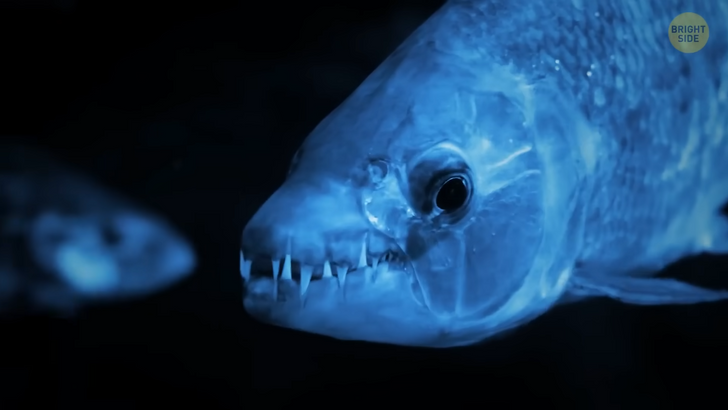
The dark oceanic depths are not just scary to watch, but to listen to as well. In 1997, scientists were trying to find underwater volcanoes located off the South-American coast. During their travels, they recorded one of the loudest noises ever registered. It was pretty weird, too. It was so loud even sensors from more than 3,000 miles away managed to pick it up. They later called it “the bloop”.
It took them 15 years to conclude the sound came from an icequake. That’s when seismic activity breaks frozen ground. Water at the bottom of the ocean is not always extremely cold. There are hydrothermal vents on the seafloor, and the water that comes out of them can be up to 750 F. Powerful pressure — yup, the same one that would crush you — is something that doesn’t “allow” the water to boil.
There are hundreds of animal species that live near deep-sea hydrothermal vents. Some of them, such as tube worms, are not like anything we have seen before. These worms absorb chemicals from vent fluids. That’s how they feed bacteria that live in them. And in return, those bacteria give them the carbon the tube worms need to survive.
Two-thirds of all of the coral species scientists discovered live in dark, deep, and extremely cold parts of the ocean. Some even live in parts that are 3 miles deep. They can survive at low temperatures such as 28 F. Some of these cold-water corals are more than 8,000 years old.
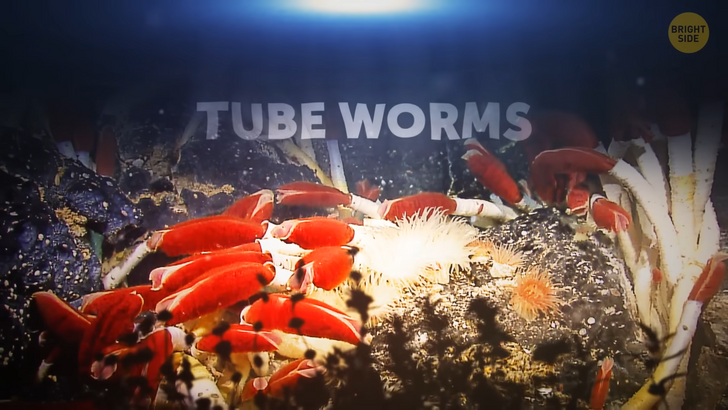
They form amazing structures that can rise up to 115 feet tall. The deep is not just a mysterious world of unusual creatures — the landscape under the oceanic surface is magnificent too! The canyons hiding there make even the Grand Canyon seem small.
For instance, check out the one located in the Bering Sea: the Zhemchug Canyon. Its vertical relief is more than 8,500 feet [8,520 feet] deep. That’s huge! The largest ocean waves are not the ones you can see from the shoreline.
They occur under the surface and they’re called internal waves. They take place between two water masses that have different densities. They travel at speeds of thousands of miles per hour and can be 650 feet tall.
Comments
Related Reads
I Refuse to Pay for Everyone Just Because I’m Childfree

My Son Wants to Kick Me Out on the Street to Accommodate His New Family

15+ Mothers-in-Law Who Can Turn an Ordinary Day Into a Comedy Show

I Refused to Let My Stepmother Dictate My Wedding—I Have Been Too Kind

11 People Who Chose Kindness Over Looking Away

11 Times People Showed That Real Courage Isn’t Loud—It’s Kind

12 Stories That Had More Drama Than a Season Finale

My Daughter Refused to Support Me—Despite Everything I Had Given Her

I Left My Estate to My Adopted Son, and Now My Biological Kids Are Pleading for a Share

15 Animal Stories That Prove Kindness Is a Language Every Living Being Speaks

I Won’t Forgive My Parents Who Made Me Feel Worthless

I Refuse to Walk My Daughter Down the Aisle With the Man Who Ruined Our Family
